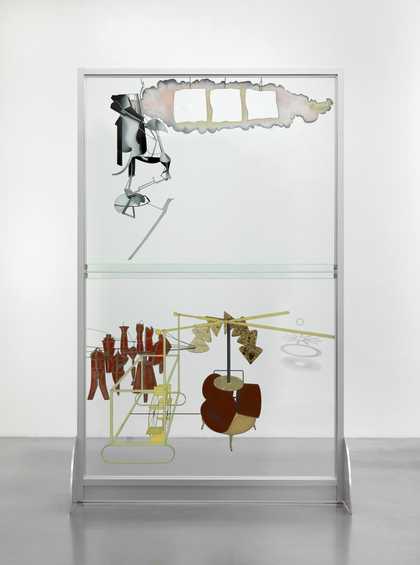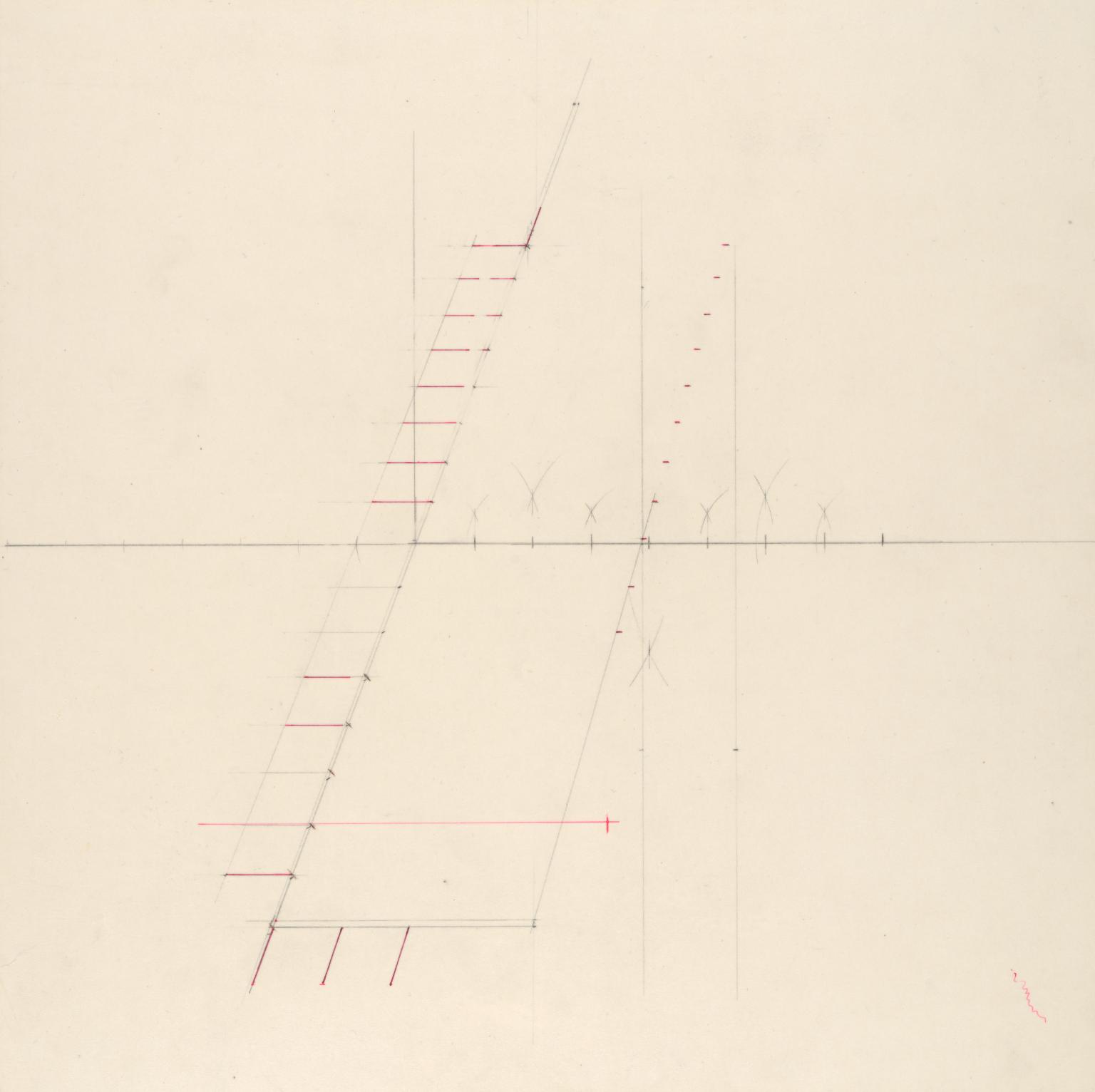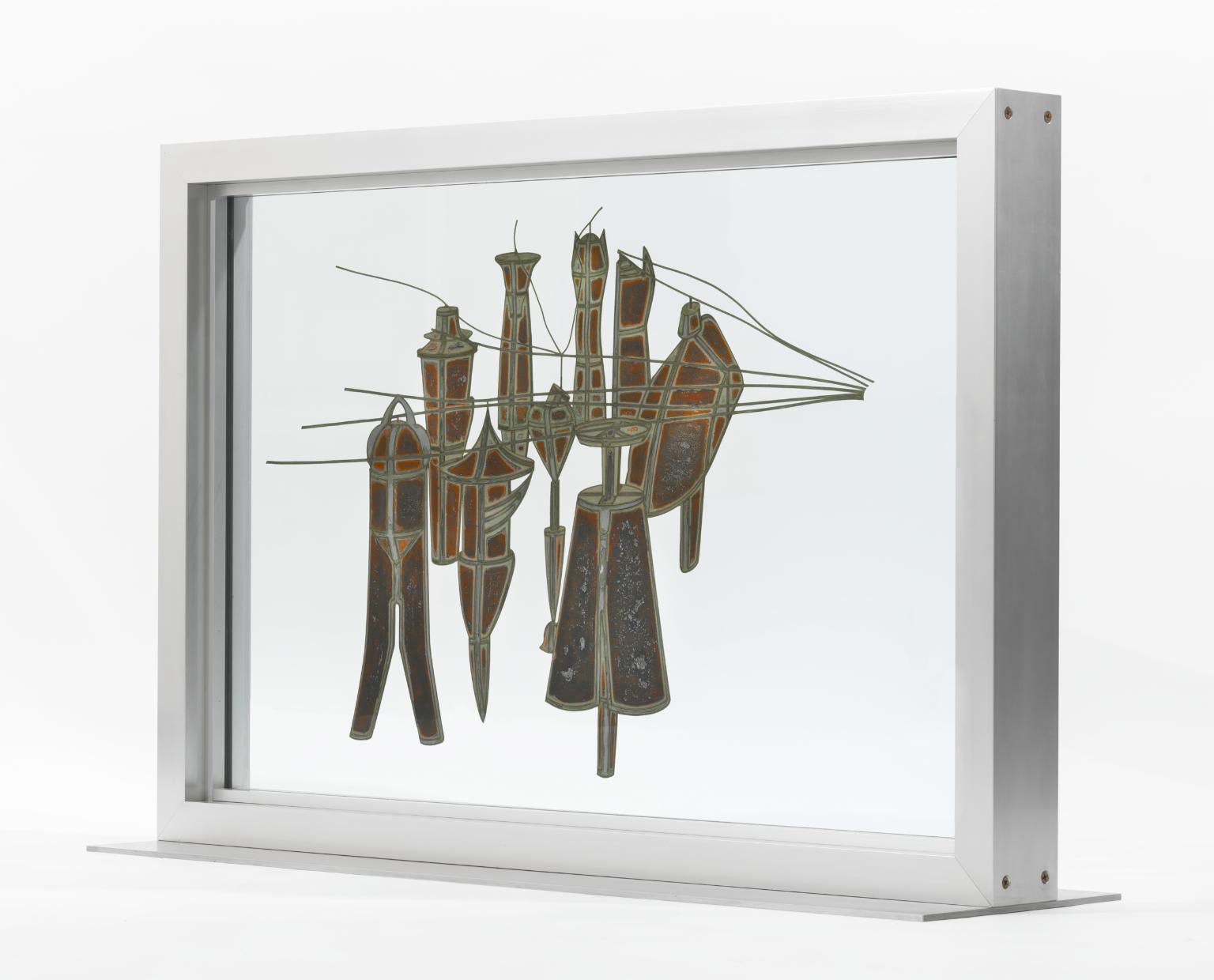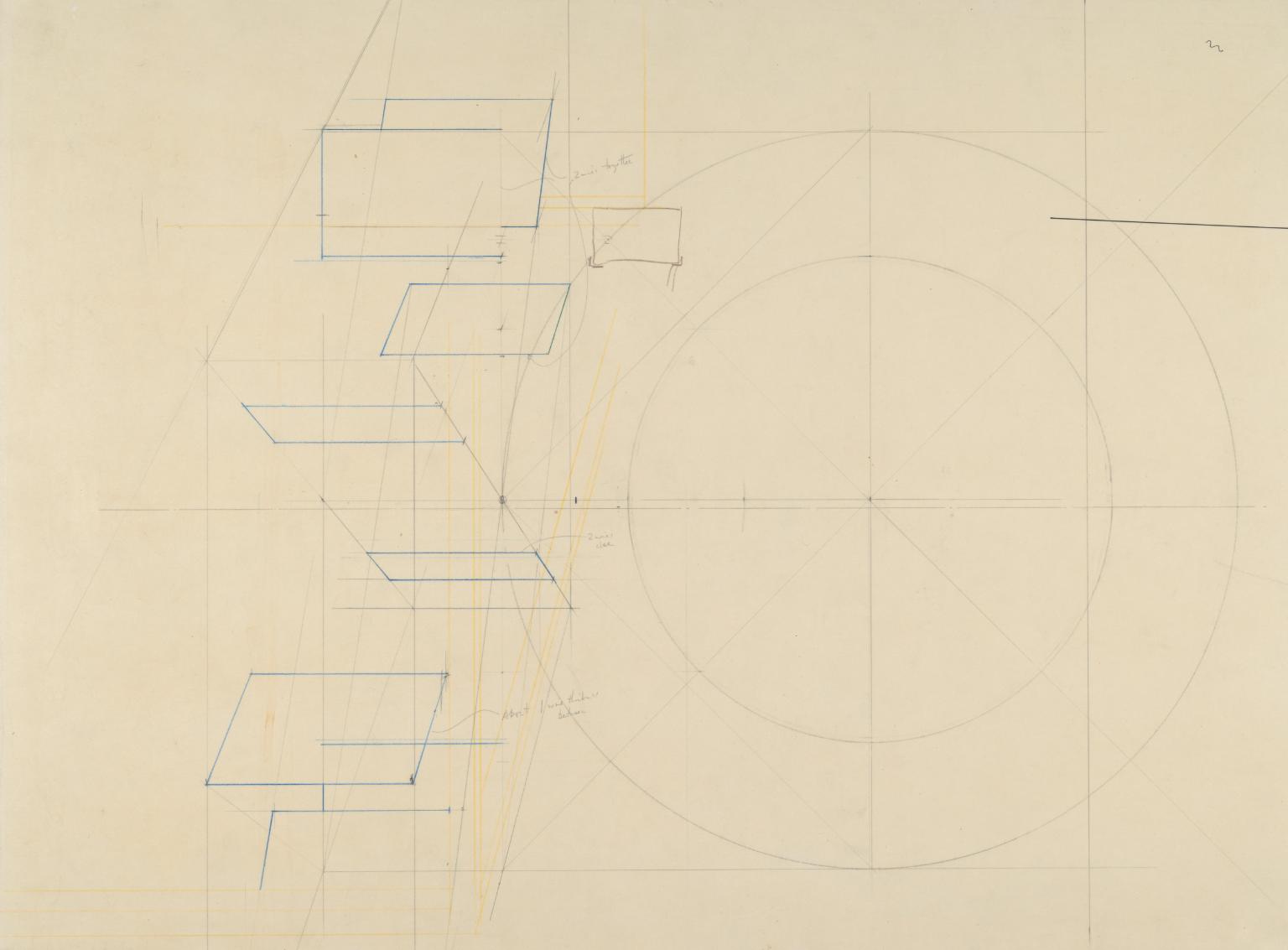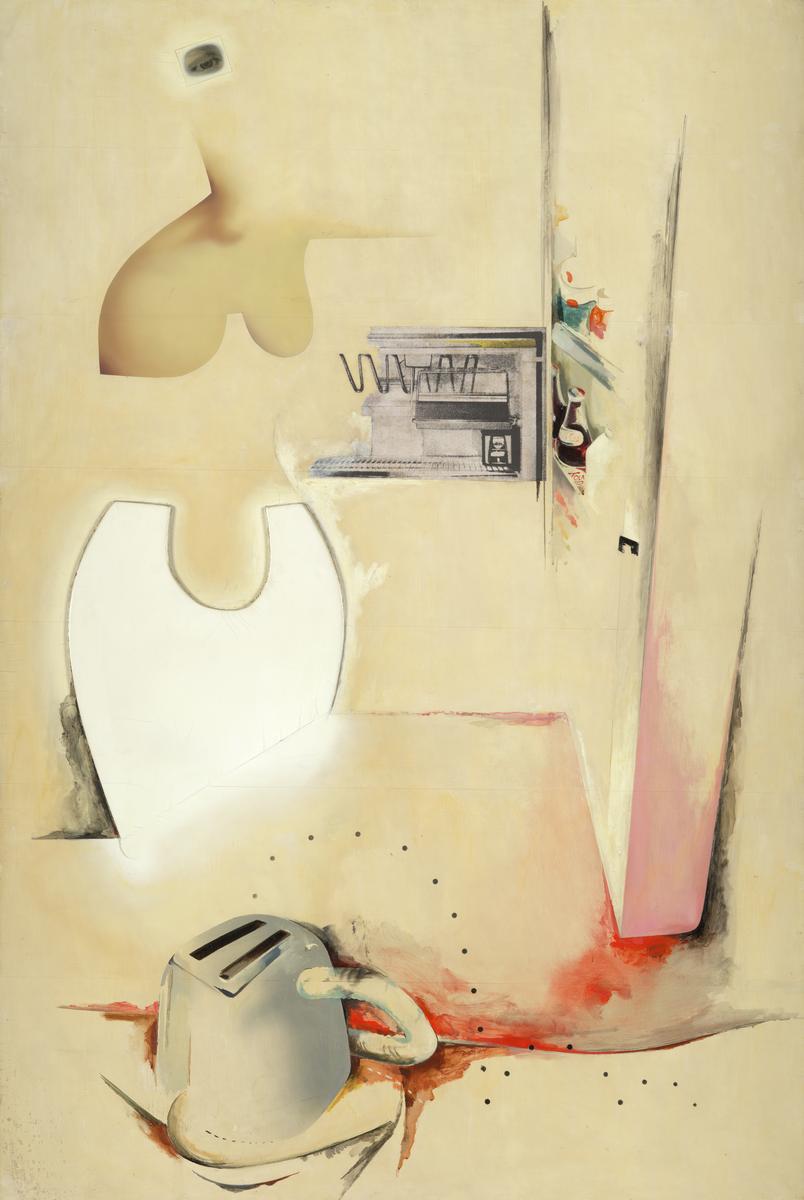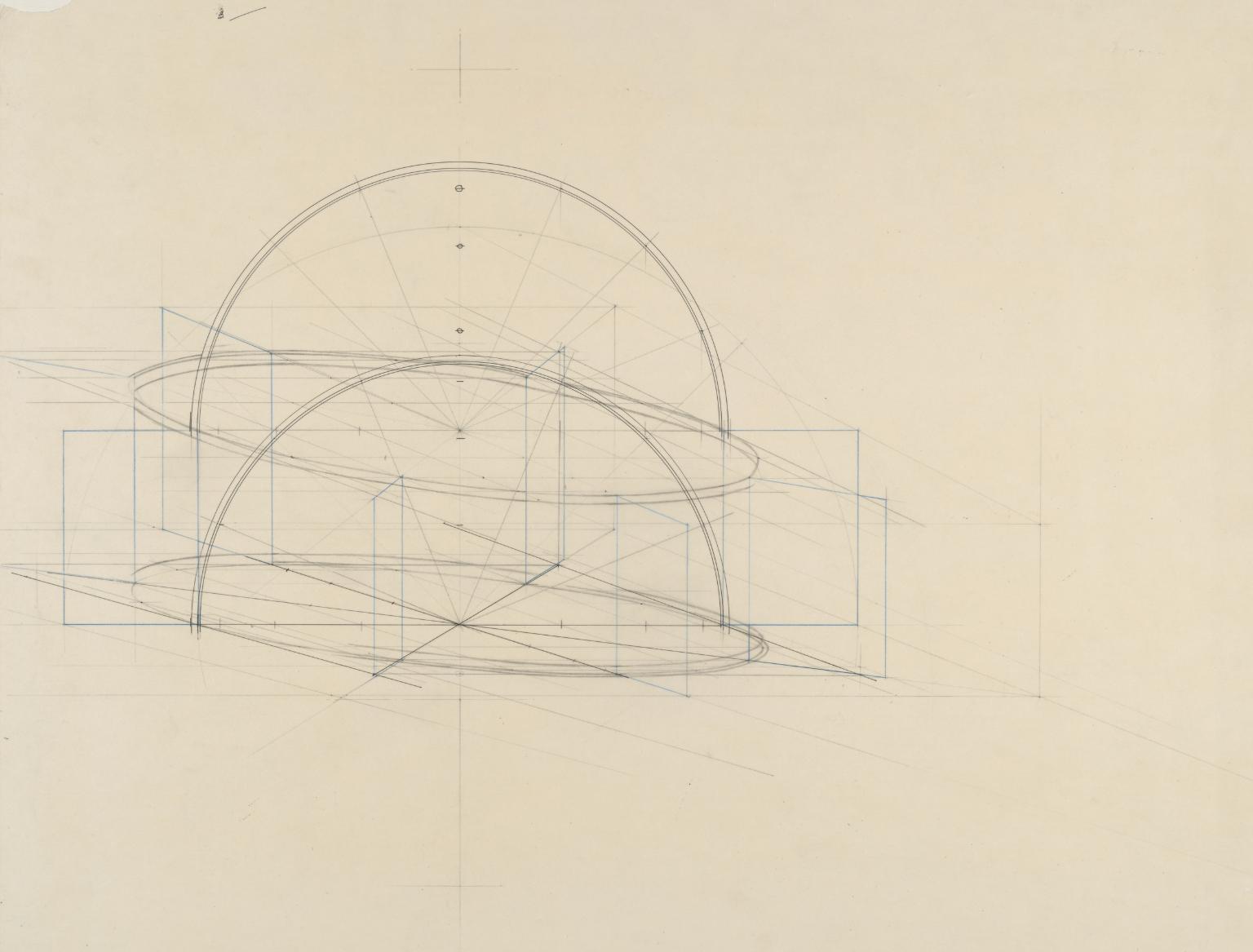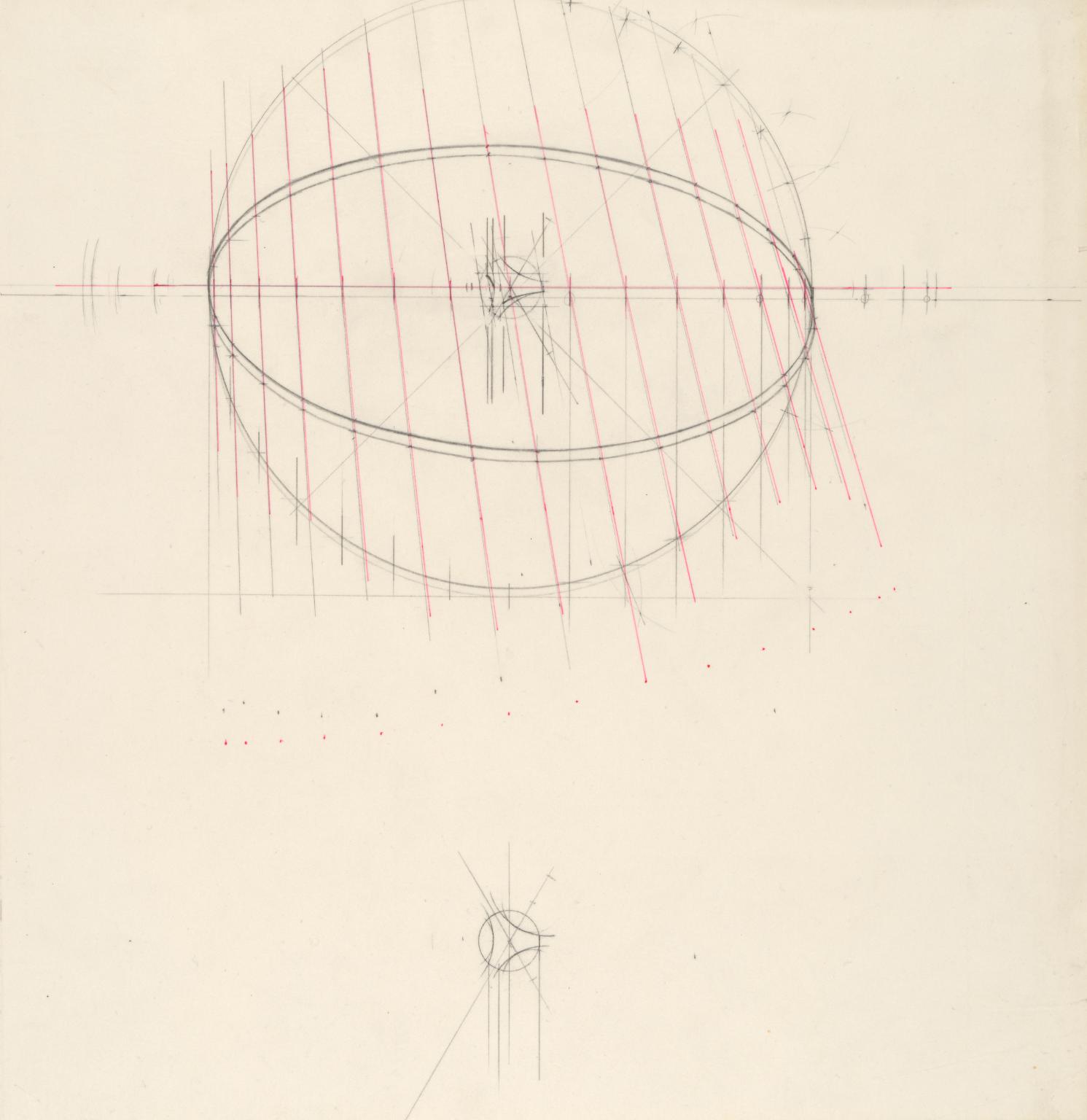14 rooms in Modern and Contemporary British Art
This room explores the friendship and collaborations of the artists Richard Hamilton and Marcel Duchamp in the years 1956 to 1968
During the 1950s, Duchamp’s work was not well known in the UK. Hamilton made great efforts to study and champion the older artist, serving as his decipherer and decoder. Through Duchamp, Hamilton was encouraged to reconsider the nature of art and visual perception. He noted, ‘what I admired him most for, was his detachment. It was as though he’s looking at the thing from quite a distance.’
Hamilton first wrote to Duchamp in 1956, volunteering to translate one of his artworks from French into English. The Green Box is an archive of notes and drawings created by Duchamp while making his major glass artwork The Bride Stripped Bare by her Bachelors, Even (also known as The Large Glass) from 1915–23. Under Duchamp’s close supervision, Hamilton published The Green Book in 1960. The two artists became friends and remained in regular contact. In 1966 Hamilton curated the UK’s first major Duchamp exhibition at the Tate Gallery (now Tate Britain). As the original Large Glass was too fragile to travel, Hamilton began a step-by-step reconstruction guided by Duchamp and his notes.
Hamilton found The Large Glass fascinating as a detached study of mechanised desire and sexual frustration in human relationships. This period of research and dialogue with Duchamp, often credited as one of the first conceptual artists, inspired Hamilton to introduce complex ideas and symbolic systems in his own work.
The methodical reconstructions of Duchamp’s work produced by Hamilton question conventional ideas of artistic authorship. The Large Glass on display here was approved and signed by Duchamp in 1965 as a ‘faithful replica’. The other, related works are unique results of creative dialogues between the two artists. Their authorship is open to interpretation.
Marcel Duchamp (1887–1968) was born in Normandy, France. He lived and worked in Paris and New York.
Richard Hamilton (1922–2011) was born in London, UK. He lived and worked in London and Oxfordshire.
Art in this room
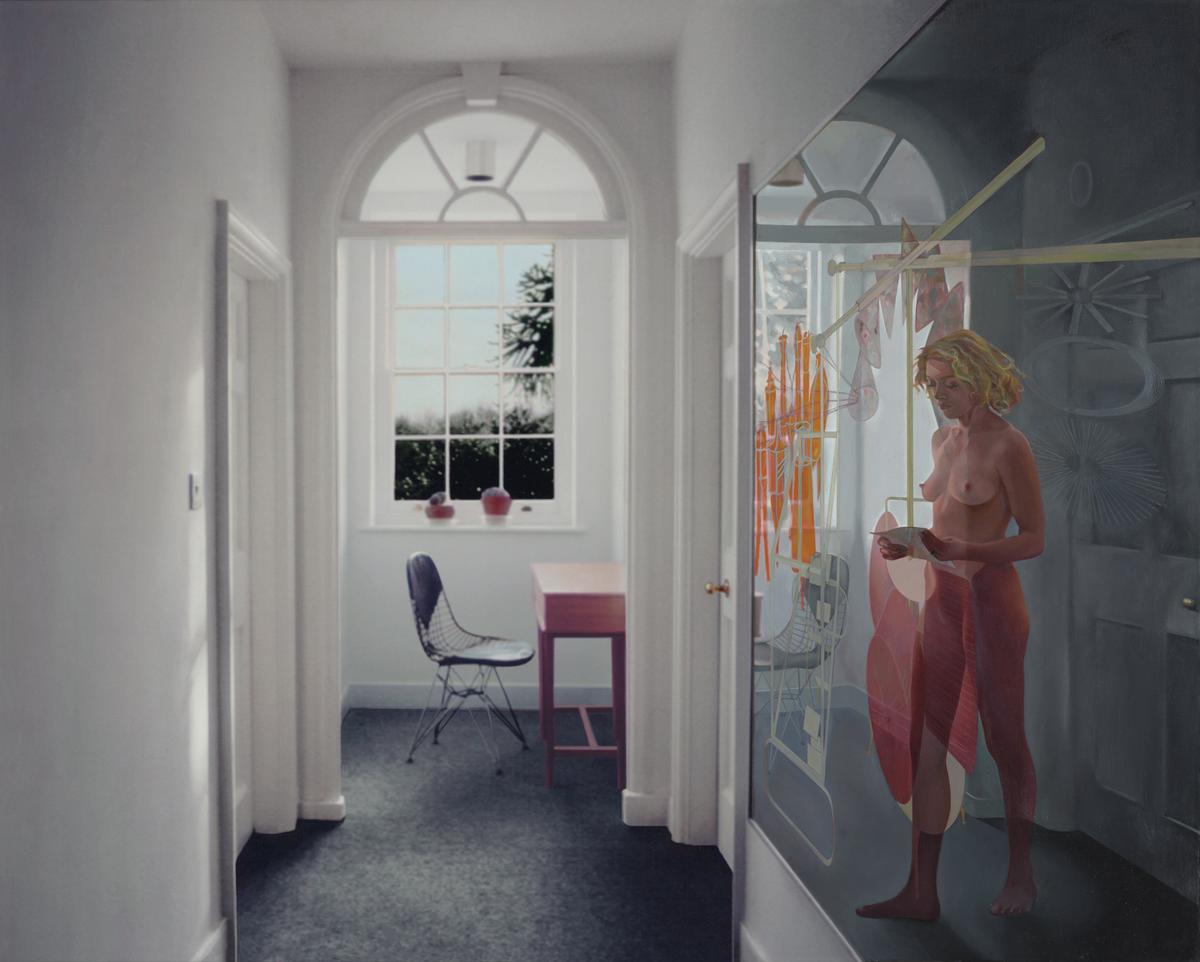
Sorry, no image available

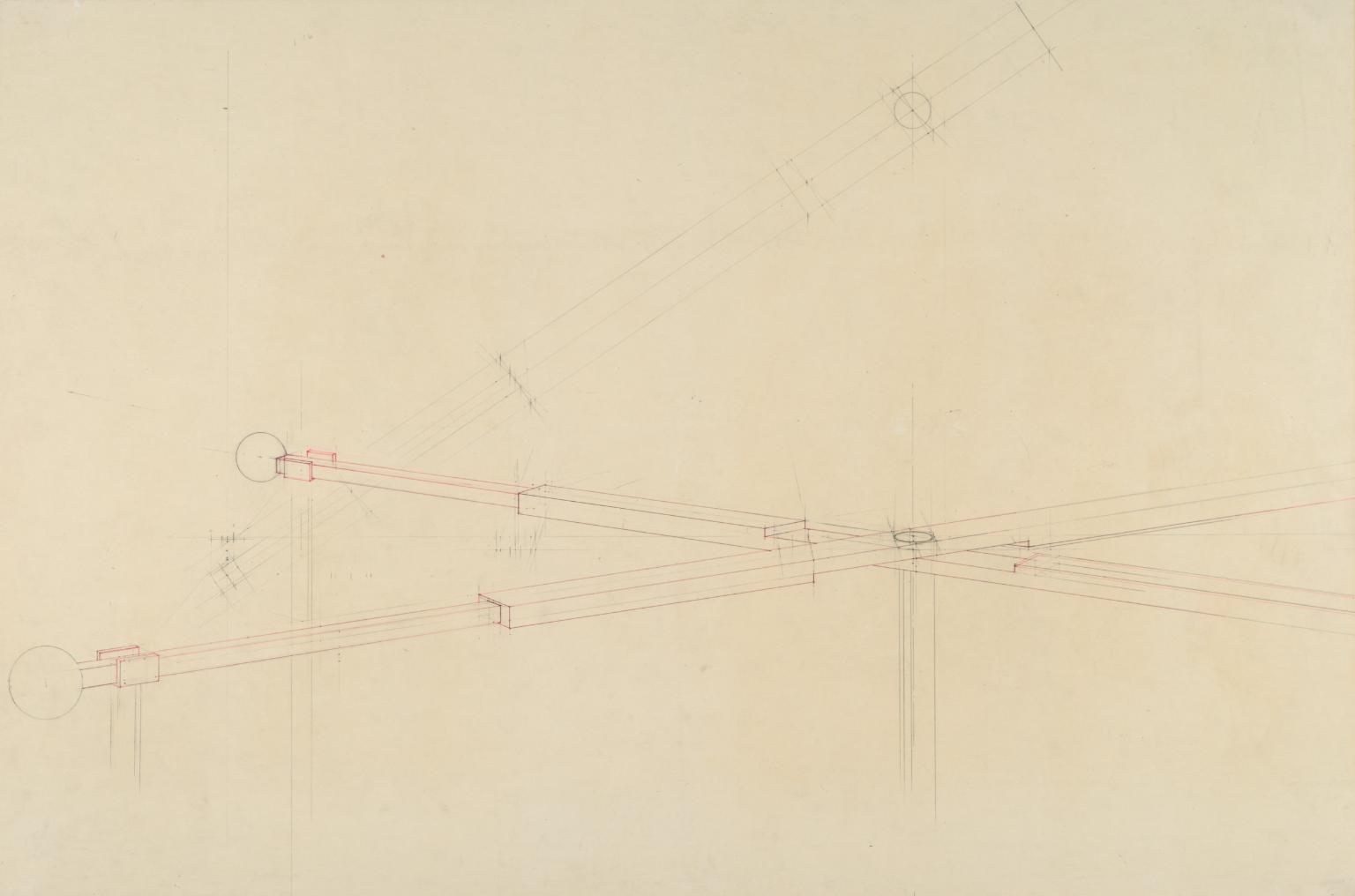
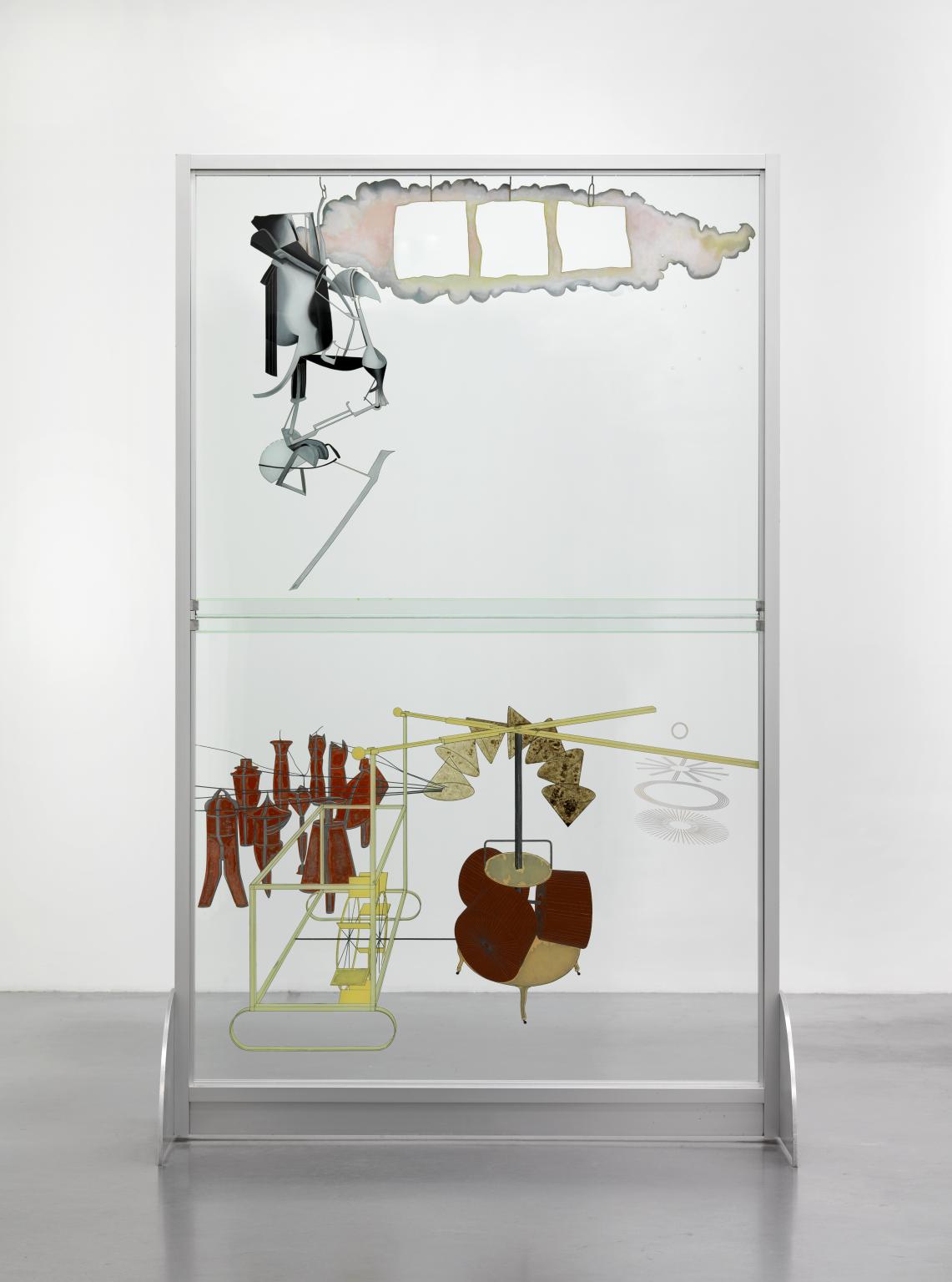
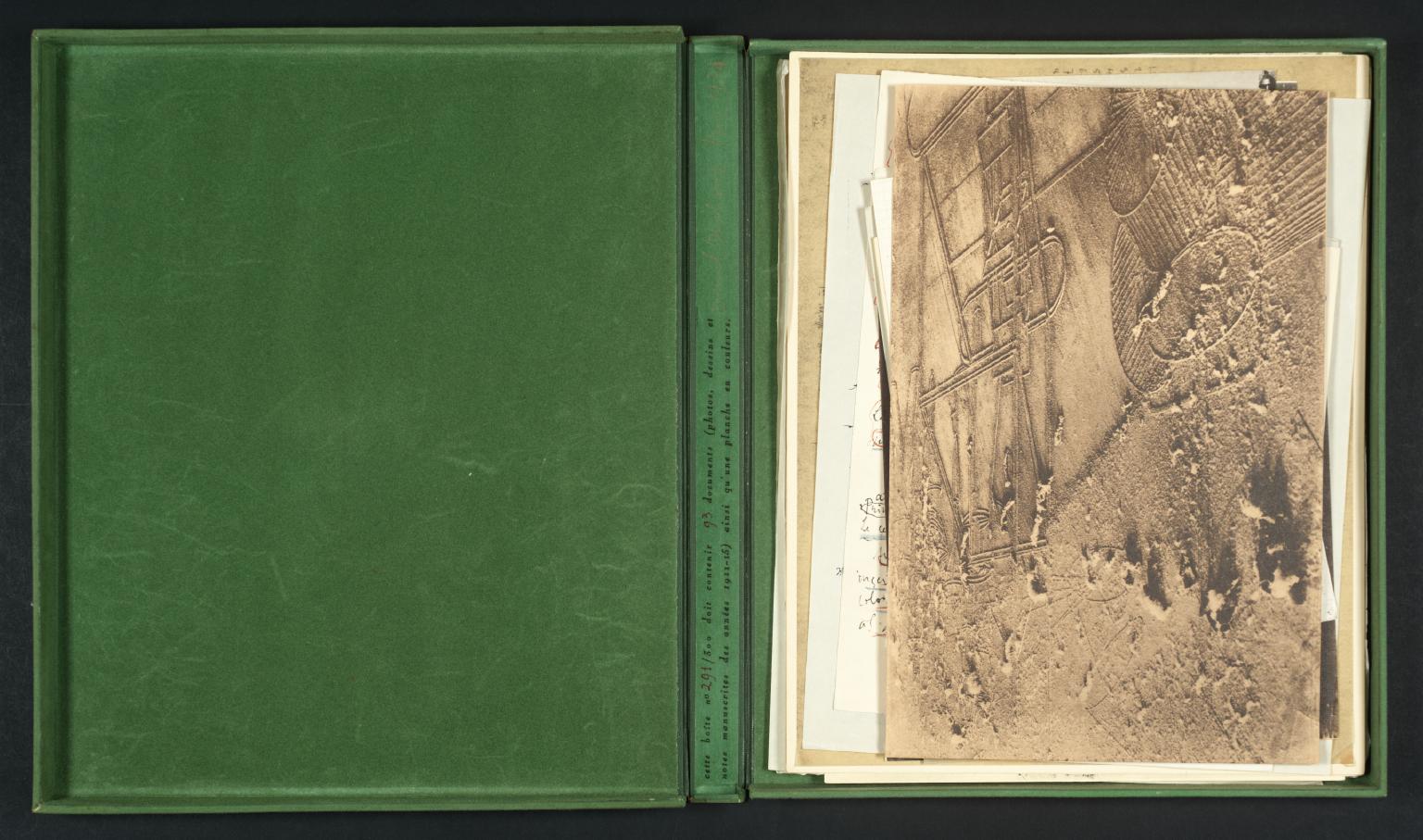
You've viewed 6/14 artworks
You've viewed 14/14 artworks

